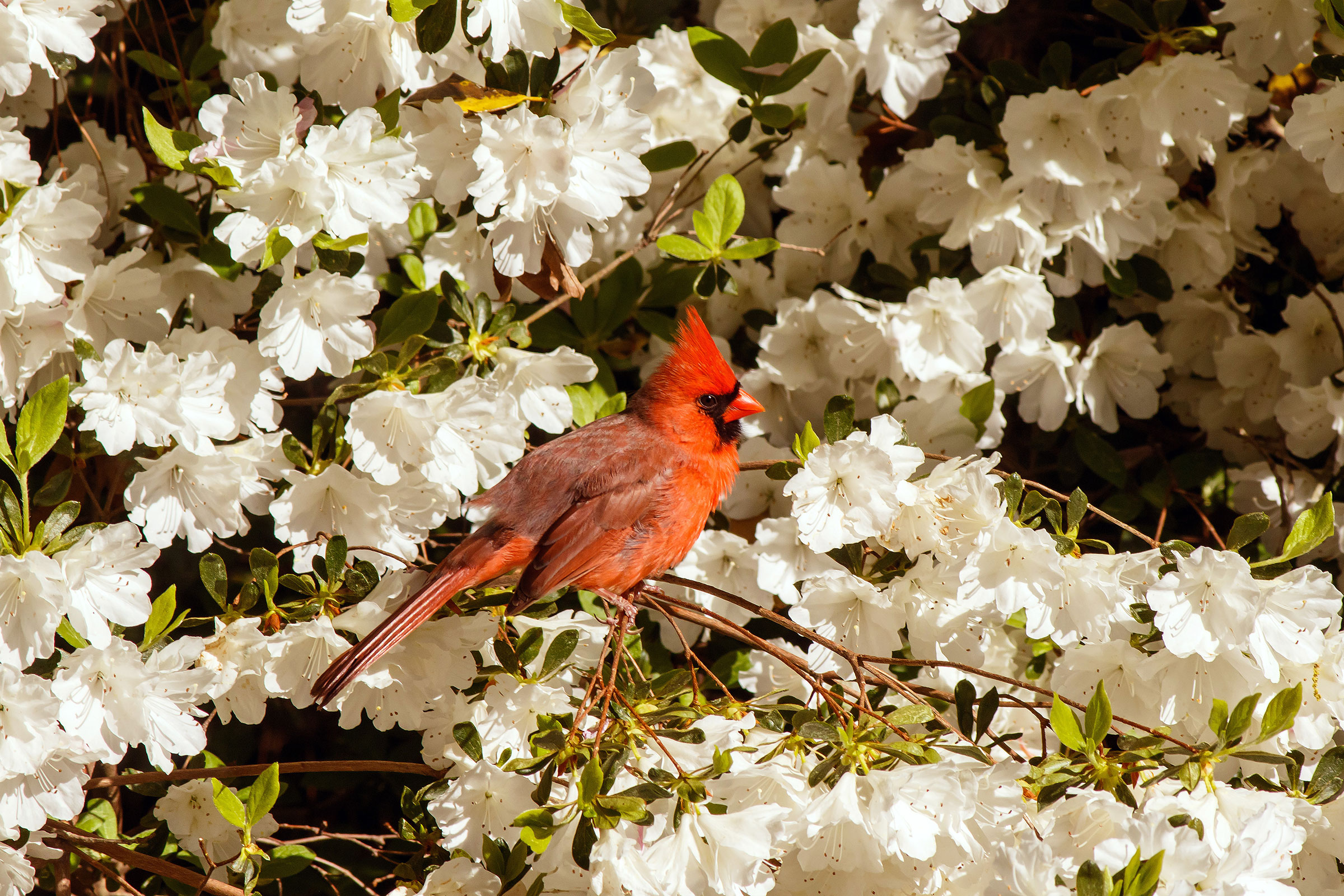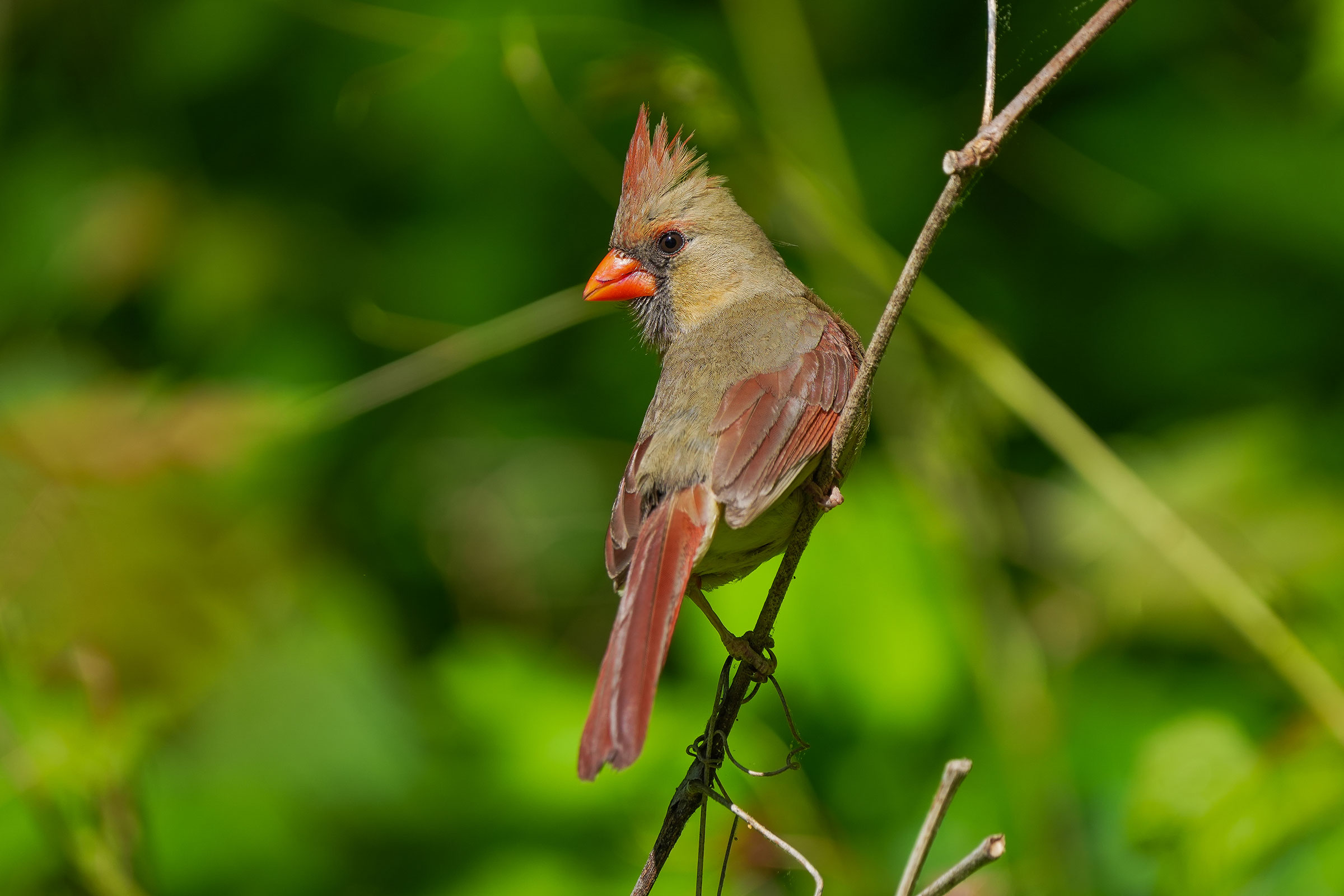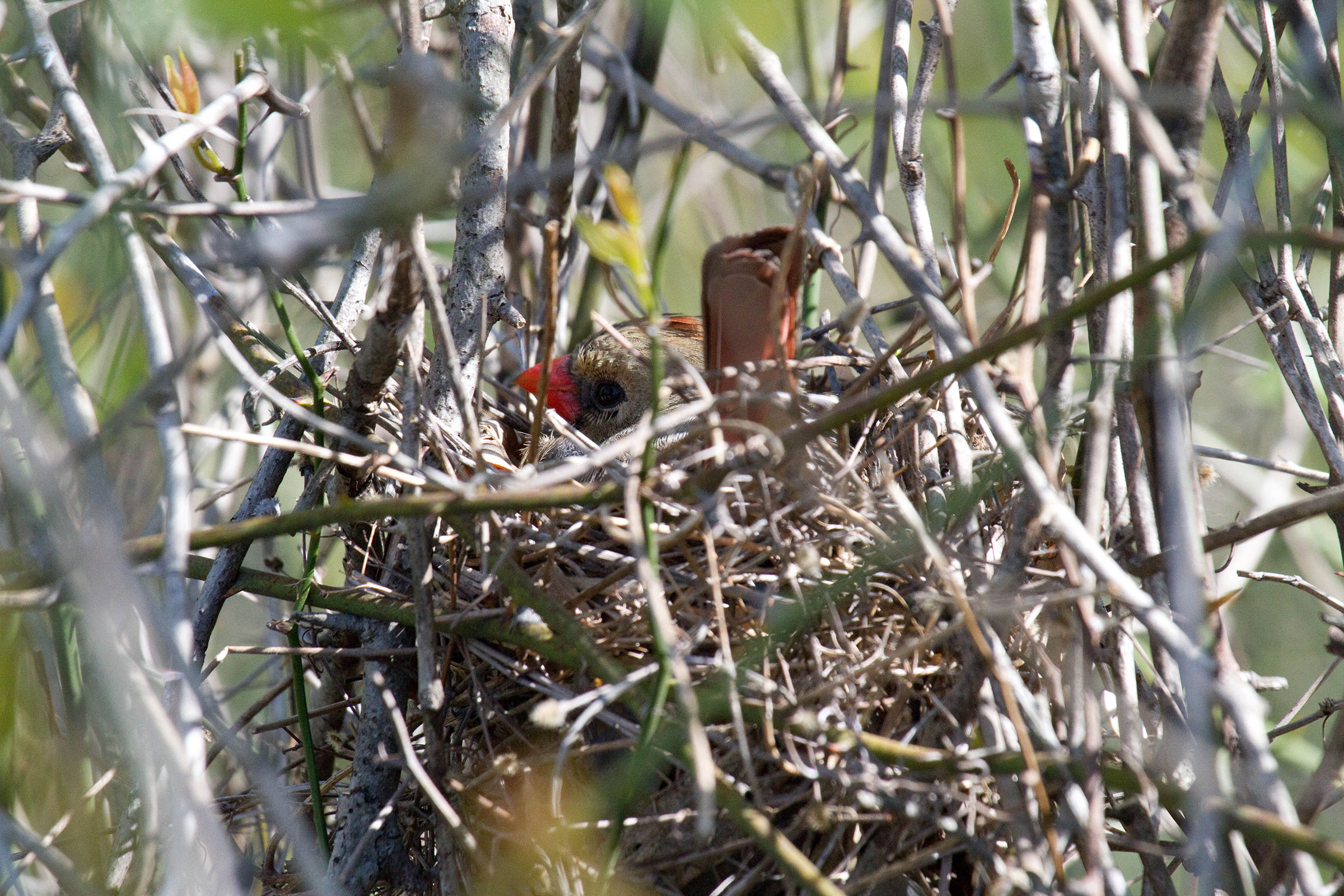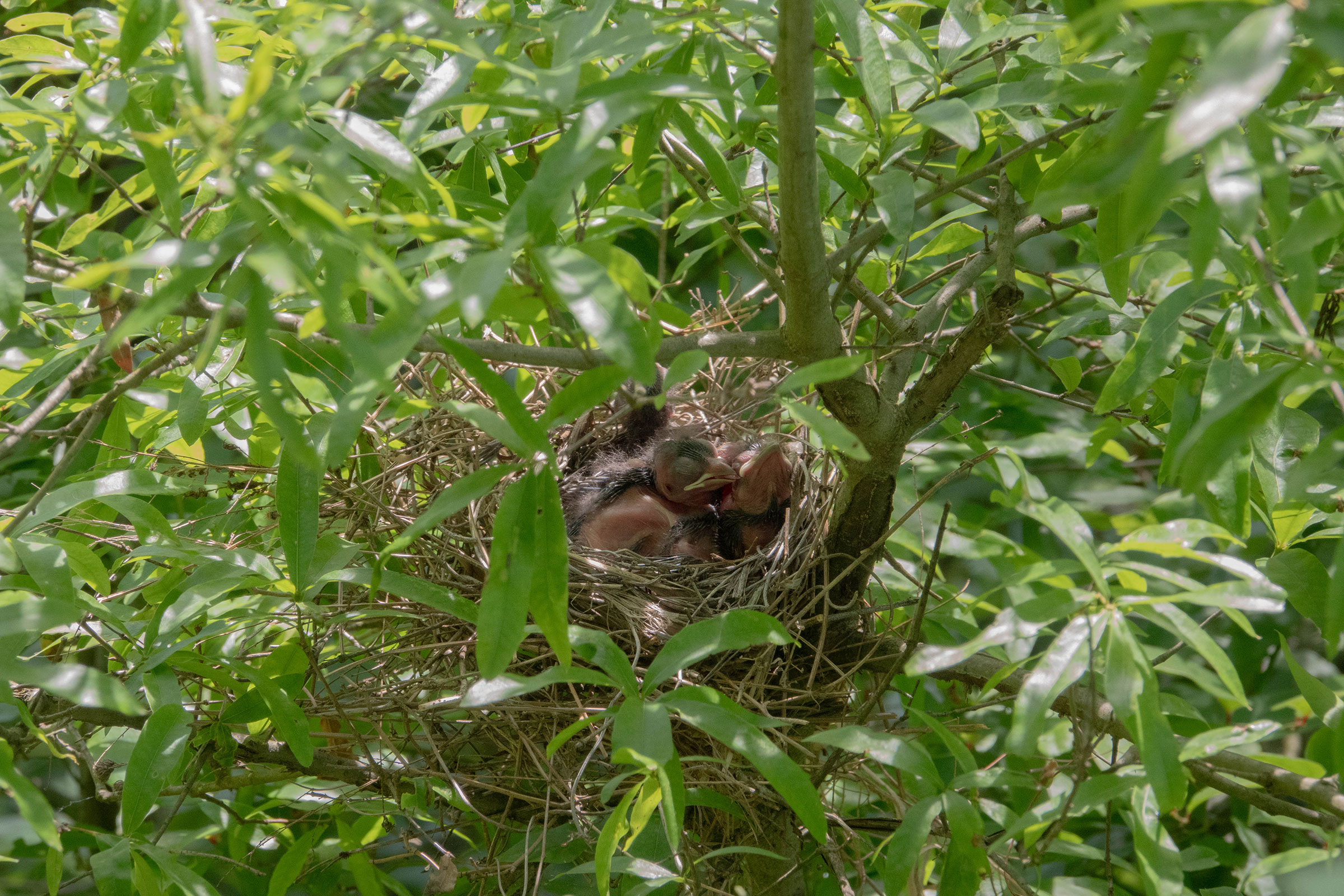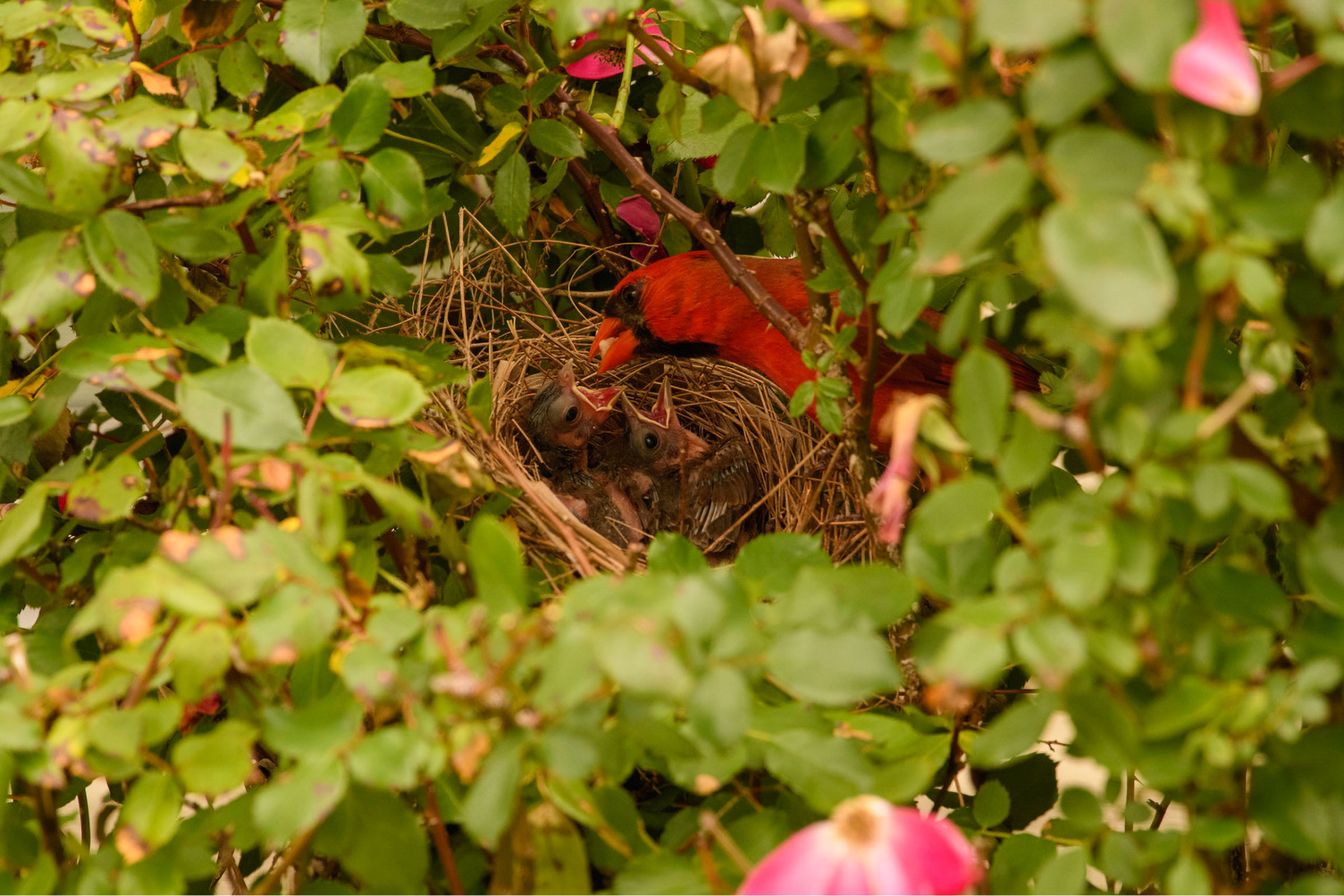Introduction
The Northern Cardinal likely needs little introduction as it is Virginia’s state bird, a designation shared with Illinois, Indiana, Kentucky, North Carolina, Ohio, and West Virginia. This iconic feeder bird provides a pop of red in a dull winter landscape or a summer forest. Pairs are a common sight in residential areas during the breeding season, passing a sunflower seed beak-to-beak during courtship. Unlike many songbirds, both males and females sing prolifically (Halkin et al. 2021). The Northern Cardinal is one of the most abundant breeders in forest edges, old fields, and backyards throughout the Commonwealth.
Breeding Distribution
Northern Cardinals are almost uniformly found throughout Virginia (Figure 1). Although the species is slightly less likely to occur at high elevations in the Mountains and Valleys region, it is still more than 50% likely to occur in every block. Generally, occurrence is more likely in blocks with higher incidence of forest edge habitat, indicative of an ability to thrive in human-altered environments. Research along urban-to-rural gradients in the Washington, D.C. area found that Northern Cardinals had higher nest success (Ryder et al. 2010) and adult survival (Evans et al. 2015) in areas that were moderately or highly urbanized.
Northern Cardinal distribution during the First Atlas and change between Atlas periods could not be modeled due to model limitations (see Interpreting Species Accounts). Nonetheless, the species has likely not changed in distribution. For more information on its distribution during the First Atlas, please see the Breeding Evidence section.
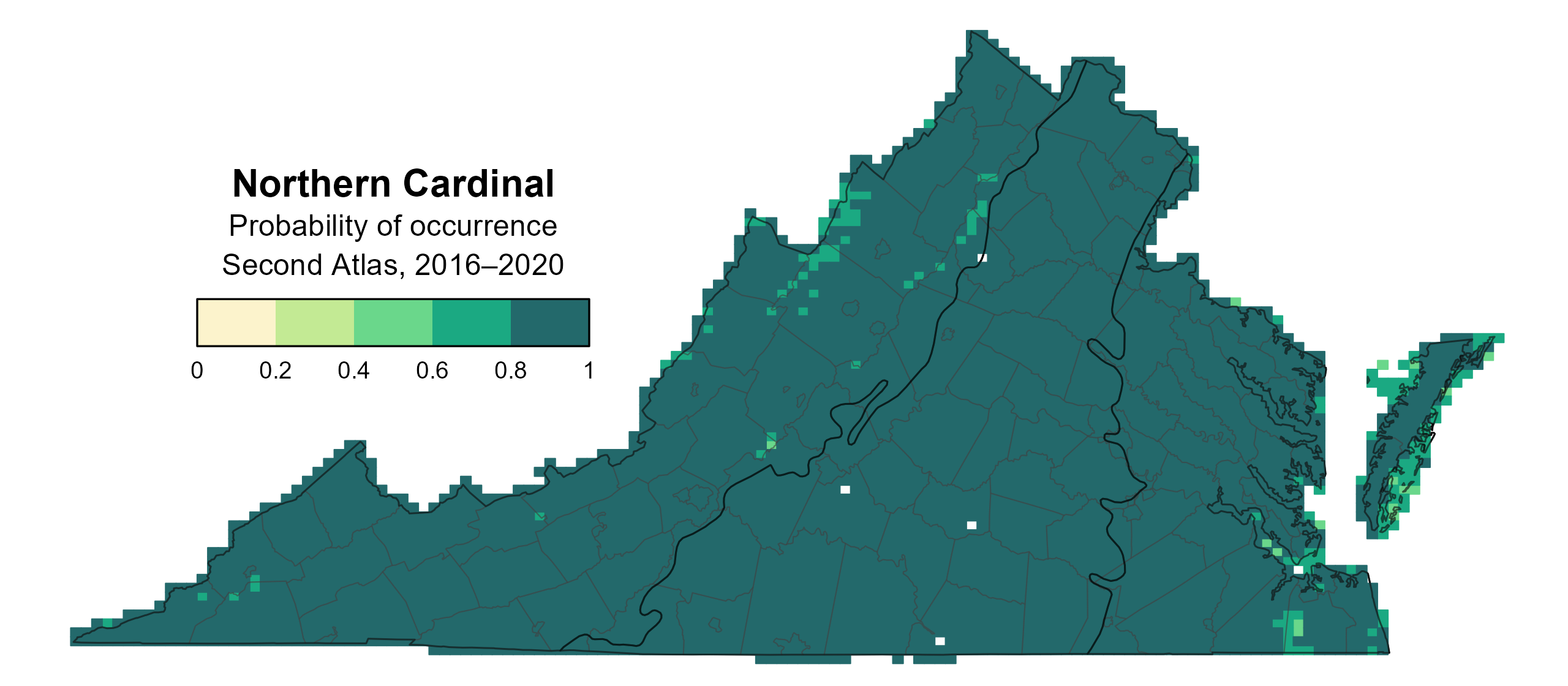
Figure 1: Northern Cardinal breeding distribution based on probability of occurrence (Second Atlas, 2016–2020). This map indicates the probability that this species will occur in an Atlas block (an approximately 10 mi2 [26 km2] survey unit) based on environmental (including habitat) factors and after adjusting for the probability of detection (variation in survey effort among blocks).
Breeding Evidence
Northern Cardinals were confirmed breeders in 1,166 blocks and 129 counties, and it was a probable breeder in an additional four counties, making it a confirmed or probable breeder in all 133 counties in the state (Figure 2). During the First Atlas, it was also a confirmed breeder throughout the state (Figure 3).
The earliest confirmed breeding behavior was recorded on February 17 when an adult was observed carrying food (Figure 4). Carrying nesting material was observed starting on March 10 and nest building on March 24. The latest breeding behavior was observed on October 19 (feeding young). Observers documented Northern Cardinals performing every type of breeding activity, owing to the species’ presence around homes and yards. For more general information on breeding habits, please refer to All About Birds.
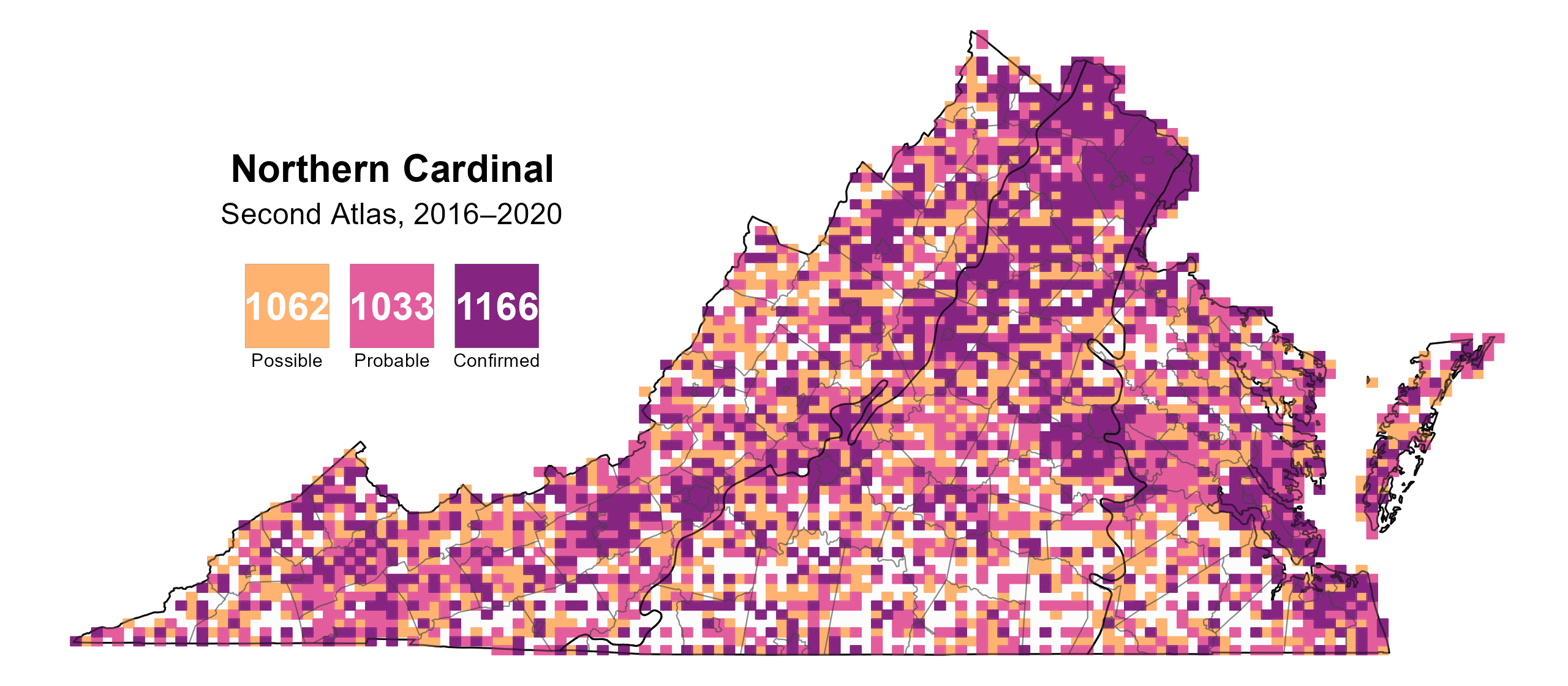
Figure 2: Northern Cardinal breeding observations from the Second Atlas (2016–2020). The colored boxes illustrate Atlas blocks (approximately 10 mi2 [26 km2] survey units) where the species was detected. The colors show the highest breeding category recorded in a block. The numbers within the colors in the legend correspond to the number of blocks with that breeding evidence category.

Figure 3: Northern Cardinal breeding observations from the First Atlas (1985–1989). The colored boxes illustrate Atlas blocks (approximately 10 mi2 [26 km2] survey units) where the species was detected. The colors show the highest breeding category recorded in a block. The numbers within the colors in the legend correspond to the number of blocks with that breeding evidence category.

Figure 4: Northern Cardinal phenology: confirmed breeding codes. This graph shows a timeline of confirmed breeding behaviors. Tick marks represent individual observations of the behavior.
Population Status
Northern Cardinal relative abundance was estimated to be highest in cities across the state and most noticeably in the areas of Hampton Roads-Virginia Beach, Northern Virginia, and Richmond (Figure 5).
The total estimated Northern Cardinal population in Virginia is approximately 3,079,000 individuals (with a range between 2,600,000 and 3,649,000). This makes the state bird the most abundant species (of those for which abundance was modeled) in the state!
Population trends for the Northern Cardinal appear stable in Virginia. The North American Breeding Bird Survey (BBS) population trend for Virginia indicated a nonsignificant decrease of 0.14% per year from 1966–2022 (Hostetler et al. 2023; Figure 6). Between Atlas periods, the BBS trend showed a significant increase of 0.66% per year from 1987–2018.
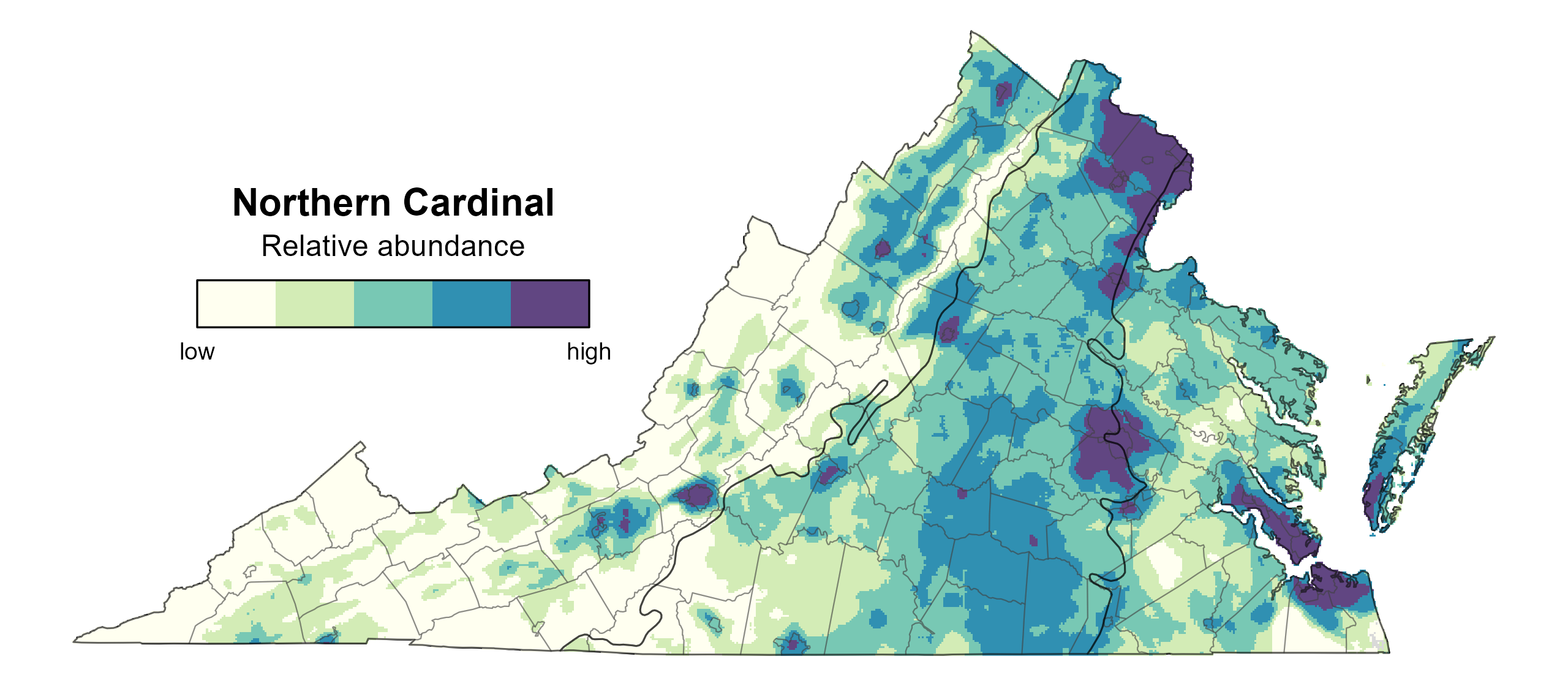
Figure 5: Northern Cardinal relative abundance (Second Atlas, 2016–2020). This map indicates the predicted abundance of this species at a 0.4 mi2 (1 km2) scale based on environmental (including habitat) factors. Abundance values are presented on a relative scale of low to high.
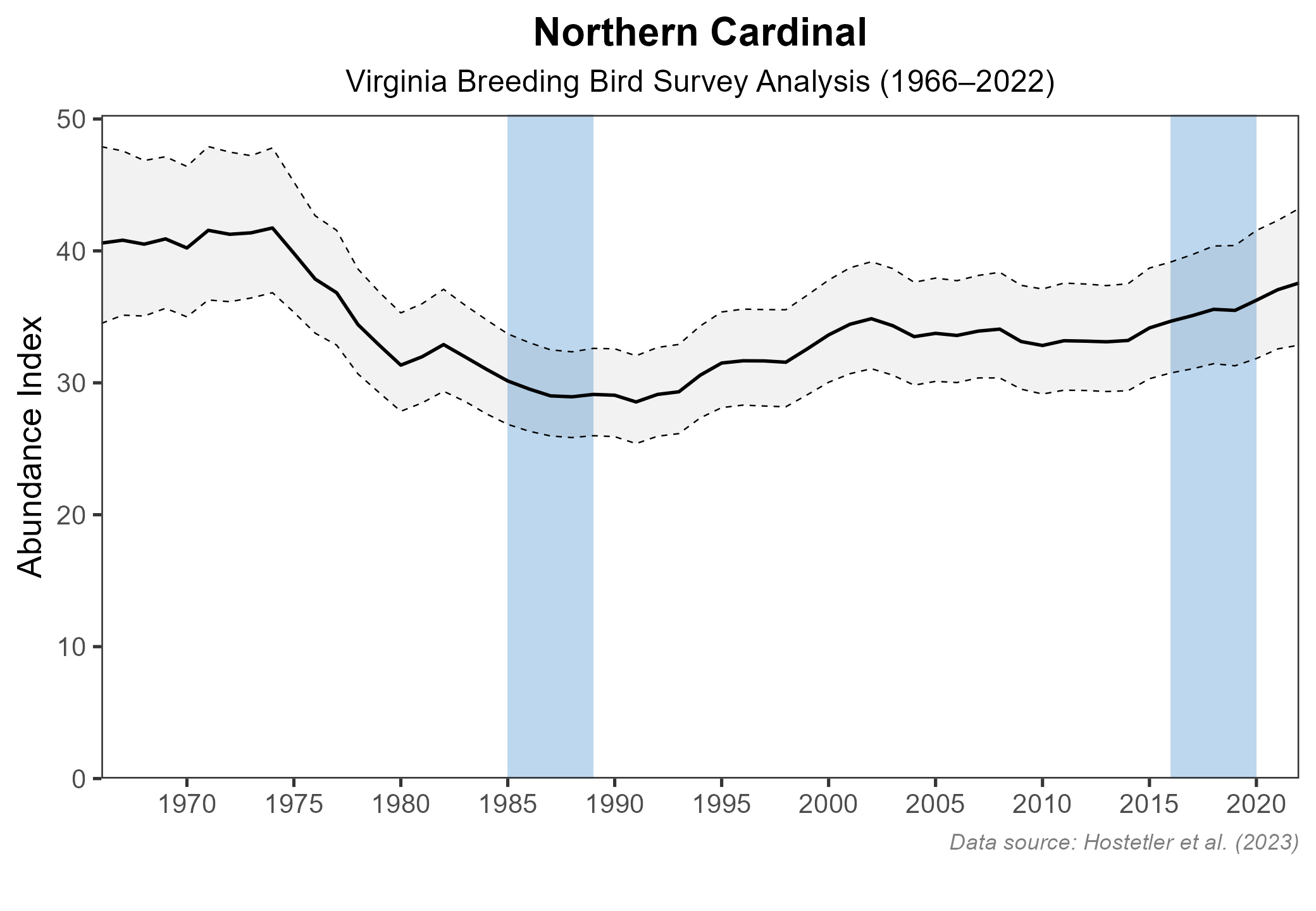
Figure 6: Northern Cardinal population trend for Virginia as estimated by the North American Breeding Bird Survey. The vertical axis shows species abundance; the horizontal axis shows the year. The solid line indicates the estimated population trend; there is a 97.5% probability that the true population trend falls between the dashed lines. The shaded bars indicate the First and Second Atlas periods.
Conservation
Virginians can rest assured that the state bird is in no immediate peril. Northern Cardinal populations are increasing within the state and more broadly, and this species is not the focus of any specific conservation efforts in the state. This dependable backyard bird will continue to delight onlookers in suburban yards and forests alike.
Interactive Map
The interactive map contains up to six Atlas layers (probability of occurrence for the First and Second Atlases, change in probability of occurrence between Atlases, breeding evidence for the First and Second Atlases, and abundance for the Second Atlas) that can be viewed one at a time. To view an Atlas map layer, mouse over the layer box in the upper left. County lines and physiographic regional boundaries (Mountains and Valleys, Piedmont, and Coastal Plain) can be turned on and off by checking or unchecking the box below the layer box. Within the map window, users can hover on a block to see its value for each layer and pan and zoom to see roads, towns, and other features of interest that are visible beneath a selected layer.
View Interactive Map in Full Screen
References
Evans, B. S., T. B. Ryder, R. Reitsma, A. H. Hurlbert, and P. P. Marra (2015). Characterizing avian survival along a rural-to-urban land use gradient. Ecology 96:1631–40.
Halkin, S. L., D. P. Shustack, M. S. DeVries, J. M. Jawor, and S. U. Linville (2021). Northern Cardinal (Cardinalis cardinalis), version 2.0. In Birds of the World (P. G. Rodewald and B. K. Keeney, Editors). Cornell Lab of Ornithology, Ithaca, NY, USA. https://doi.org/10.2173/bow.norcar.02.
Hostetler, J. A., J. R. Sauer, J. E. Hines, D. Ziolkowski, and M. Lutmerding (2023). The North American breeding bird survey, analysis results 1966–2022. U.S. Geological Survey, Laurel, MD, USA. https://doi.org/10.5066/P9SC7T11.
Rottenborn, S. C., and E. S. Brinkley (Editors) (2007). Virginia’s birdlife: An annotated checklist. 4th edition. Virginia Society of Ornithology.
Ryder, T. B., R. Reitsma, B. Evans, and P. P. Marra (2010). Quantifying avian nest survival along an urbanization gradient using citizen‐ and scientist‐generated data. Ecological Applications 20:419–426.

